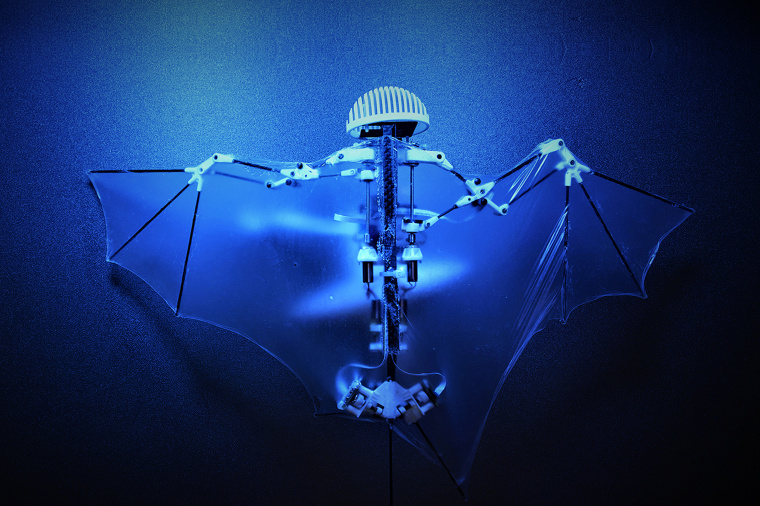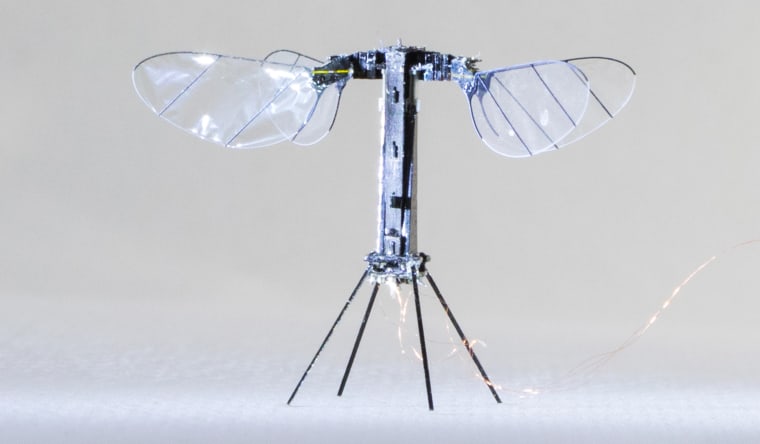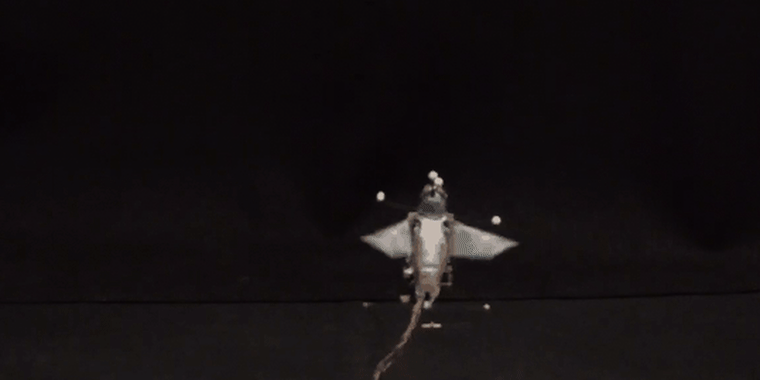From hummingbirds that zip about in all directions to bats that veer sharply to nab flies in midair and land upside down to hang from cave ceilings, the world is filled with extraordinary flying animals.
These tiny aviators are more agile than any aircraft — but that may be about to change. Inspired by the aerial abilities of birds, bats and insects, researchers are crafting a new generation of ultralight drones that lack propellers and are equipped not with fixed wings but with flapping ones.
One day, these tiny flying machines may be flitting unobtrusively over the landscape, collecting weather data, monitoring traffic, alerting first responders to accidents and disasters, inspecting construction sites and more. Farmers could use them to pollinate crops and law enforcement agencies could use them for search and rescue and to conduct surveillance.
Eventually, the so-called bio-inspired drones may become available for personal use, flying inside homes and outside them, perching on people’s shoulders, shooting photos and videos and perhaps even keeping discreet watch on elderly people at risk of falling or wandering off.
Experts say the flying machines will be able to perform tasks without disturbing or endangering people or property. “There will be these machines that are round the clock doing monitoring and providing information,” says Alireza Ramezani, a Northeastern University roboticist who is working on a bat-inspired robot called Bat Bot. “We can think of them as the guardians of future cities.”
Inspired by nature
Bio-inspired drones are similar in principle to the beetle and bird drones seen in the 2015 movie “Eye in the Sky;” the bird drone from that movie was inspired by a real-world robot commissioned by the Defense Advanced Research Projects Agency (DARPA) and built by the California-based aircraft company AeroVironment.
The new drones are still in the prototype stage; it will be years before they’re ready to zip around outside like their cinematic counterparts. But they’re being refined to fly farther and more adeptly and to carry cameras, radios, GPS systems and a variety of sensors — and, eventually, to work together.
Ramezani and his colleagues drew their inspiration from bats’ ability to fold their wings into various shapes — an ability that gives them tremendous agility. The researchers built a three-ounce drone with a one-foot wingspan and a carbon-fiber skeleton, with wings made from a stretchy membrane as thin as a human hair.

The drone is currently limited to flying in a straight line, turning and diving, but Ramezani plans to tackle more complex maneuvers, such as upside-down landings. He says Bat Bot and other drones that fly like bats, hummingbirds and bugs offer key advantages over ordinary drones — including enhanced safety and agility.
“They are made out of hard materials, rigid structures, fast-rotating blades and propellers, which are not really safe to operate in proximity of human beings," Ramezani says of conventional drones like quadcopters. "And they’re kind of intrusive.”
Bio-inspired drones have soft, flexible bodies that should be harmless to people who reach out to touch them — and they can bounce off obstacles without sustaining or causing serious damage.
Flapping-wing drones will also be able to maneuver through tight spaces that are off limits to larger drones of conventional design, says Xinyan Deng, a Purdue University mechanical engineer who is working on drones modeled after hummingbirds. One of her team’s prototypes, which was presented in May at a robotics conference in Montreal, features a 3D-printed body with flexible wings. It’s about the size and the weight of an actual hummingbird; a similar one is even smaller, about the size of an insect.
“We were able to achieve very, very fancy flight maneuvers,” Deng says of the experimental drones, including flying in a figure eight. The drones can also navigate a corridor by touch and turn 180 degrees in just a few wing beats, much as real hummingbirds do to elude predators.
Bats and hummingbirds aren’t the only inspirations for the next-generation drones.
Animal Dynamics of Oxford, England, is working with the United Kingdom’s Defense Science and Technology Laboratory to build a dragonfly-like drone.

And at Harvard University, researchers are working on RoboBee, which weighs less than a paper clip and features two pairs of solar-powered wings controlled by artificial muscles. The latest version recently took its first flight without a power cord.
Drone swarms
In addition to offering tiny size and maneuverability, bio-inspired drones should be inexpensive to make, Farrell Helbling, a roboticist on the RoboBee team, says. That raises the possibility that they could be deployed in large numbers.
“Because these things are so cheap and you [could] have a hundred of them, you don’t care if a couple of them fail,” Helbling says. “You’re just trying to get as much information as possible.”
Ramezani foresees Bat Bot swarms scouting construction sites and other workplaces, alerting people to dangerous situations, such as a structure at risk of collapsing. The bots could be a continuous presence, he says, adding that when one Bat Bot is low on power, it could roost in a charging station while another drone takes its place.
Of course, the fact that the drones will be so capable and so discreet raises privacy concerns. And there are many obstacles that researchers must overcome, including developing the best power source for the drones and determining when the tiny robots should operate autonomously or under a human operator's control.
But Helbling touts the “incredible potential" of bio-inspired drones, recalling the moment — after many failed attempts — when RoboBee finally took flight with unexpected vigor. “It flew incredibly close to me to the point where I thought that it had hit me,” she recalls. “I just wasn’t expecting it to take off with such force.”
